Whether you love cooking, eating, or just watching people whip up incredible meals, there’s a cooking show out there for you. Some are all about high-stakes challenges, others focus on homey comfort food or travel adventures centered around local dishes. This list pulls together some of the most popular and entertaining cooking shows you can watch right now no matter your vibe in the kitchen.

1. America’s Test Kitchen
America’s Test Kitchen is a long-running cooking show that focuses on practical, tested recipes and cooking techniques. Filmed in the actual test kitchen at America’s Test Kitchen’s facility in Boston, Massachusetts, the program brings together experienced chefs and food experts who walk viewers through the process of preparing a variety of dishes. The tone is instructional, but not overly technical, and each episode offers a look into how and why certain recipes work.
The show also includes segments on kitchen gear, ingredients, and product testing. Rather than focusing on dramatic competitions or flashy presentations, it leans into consistency, education, and detail. The team explores what works and what doesn’t in cooking, helping home cooks make informed choices in the kitchen.
Key Highlights:
- Offers explanations behind cooking techniques and recipe development
- Includes gear reviews, taste tests, and product comparisons
- Focuses on reliable, approachable home cooking
Who it’s best for:
- Home cooks who want dependable, well-explained recipes
- Viewers interested in the science and reasoning behind cooking methods
- Anyone looking to improve kitchen skills without competitive pressure
- Fans of calm, educational cooking formats without scripted drama

2. Chef’s Table
Chef’s Table is a long-form documentary series that delves into the lives and philosophies of chefs from around the world. Each episode typically focuses on a chef or a culinary team, offering a portrait that combines personal background, professional journey, and reflections on culinary creativity. The tone is reflective and cinematic, aiming to connect food with broader themes like culture, memory, and artistic vision.
The series avoids traditional cooking show formats, opting instead for narrative storytelling supported by visual detail, original music, and on-location footage. Rather than demonstrating how to cook, it offers insight into why chefs cook the way they do. The result is a meditative exploration of what drives innovation and tradition in kitchens globally.
Key Highlights:
- Shot in a cinematic, documentary style with immersive visuals
- Explores themes beyond cooking, including heritage, creativity, and identity
- Includes regional and thematic spin-offs across multiple food styles
Who It’s Best For
- Viewers interested in chef-focused storytelling
- Fans of narrative-driven documentaries about food culture
- People curious about the intersection of personal history and cuisine
- Audiences seeking thoughtful, visually rich food programming without tutorials
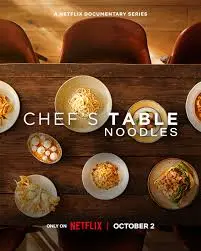
3. Chef’s Table: Noodles
Chef’s Table: Noodles is a spin-off of the Chef’s Table documentary series, focusing on the personal and culinary journeys of chefs who specialize in noodle-based cuisine. Each episode focuses on one chef, blending interviews, kitchen scenes, and storytelling to highlight their philosophy, background, and signature approach to cooking. The format emphasizes atmosphere and emotion, offering more than just recipes by diving into the meaning and cultural context of food.
This series continues the established visual and narrative style seen in previous Chef’s Table productions. It places strong attention on visuals, music, and pacing, creating an immersive viewing experience. Instead of teaching how to cook, the series presents cooking as part of a personal and artistic journey.
Key Highlights:
- Emphasizes the cultural and personal stories behind noodle dishes
- Uses visual storytelling and interviews to frame each episode
- Builds on the aesthetic and tone of the broader Chef’s Table series
Who It’s Best For:
- Viewers who enjoy reflective, story-driven food documentaries
- Fans of series that explore chefs’ personal and professional lives
- People curious about regional and cultural expressions of noodle cuisine
- Audiences interested in culinary storytelling more than instructional content
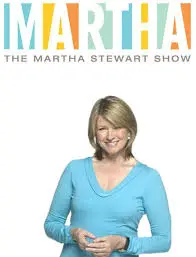
4. The Martha Stewart Show
The Martha Stewart Show was a lifestyle-focused television program that blended cooking, home projects, and guest interviews into a structured daytime format, airing until 2012. Hosted in a studio setting, the show presents a mix of demonstrations and discussions, covering topics such as recipes, crafts, gardening, and seasonal activities. Episodes follow a familiar rhythm, with each segment highlighting practical tips or creative inspiration for home living.
The atmosphere is polished and organized, with a tone that balances instruction and entertainment. In addition to solo segments led by the host, the program often features celebrity guests and specialists who contribute to the broader themes of home and lifestyle. The show encourages viewers to explore creativity in the kitchen and beyond.
Key Highlights:
- Combines food, crafts, gardening, and home improvement segments
- Blends instructional content with guest appearances
- Offers practical advice alongside lifestyle inspiration
Who It’s Best For:
- Viewers who enjoy well-rounded home and lifestyle programming
- Fans of structured daytime television formats
- Individuals seeking seasonal ideas and home-based projects
- Audiences familiar with Martha Stewart’s broader creative work

5. The Chef Show
The Chef Show is a casual, conversation-driven cooking series that brings together culinary preparation and guest interaction in a relaxed, unscripted format. Created by filmmaker Jon Favreau and chef Roy Choi, the show follows the pair as they cook various dishes while talking with guests from different backgrounds, including chefs, actors, and other creatives. The setting shifts from kitchens to restaurants and other locations, with each episode reflecting the personalities and ideas of those involved.
Rather than following a rigid recipe structure, the series focuses on the joy of cooking and sharing food. The tone is informal, with an emphasis on collaboration and exploration. The show blends elements of food culture and entertainment, offering a laid-back experience for viewers interested in both.
Key Highlights:
- Combines cooking with unscripted conversations and guest appearances
- Filmed in varied locations with an informal, documentary-style tone
- Focuses on collaboration and shared food experiences
- Created by the team behind the film Chef, with similar themes of food and creativity
Who It’s Best For:
- Viewers who enjoy relaxed, personality-focused cooking content
- Fans of shows that highlight collaboration and conversation over instruction
- Those interested in food culture tied to entertainment and storytelling
- People looking for a blend of cooking, creativity, and casual dialogue

6.The F Word (British TV Series)
The F Word is a UK-based cooking and food-focused television show hosted by Gordon Ramsay. Unlike traditional step-by-step recipe shows, The F Word blends cooking with entertainment, bringing in guests, challenges, and broader discussions around food culture. Each episode is centered around Ramsay preparing a full three-course meal at a working restaurant. These guests, often including celebrities, interact directly with Ramsay and sometimes participate in cooking tasks or food-related challenges.
In addition to the central restaurant service, the show includes segments on unusual ingredients, ethical food sourcing, and occasional community-focused food initiatives. Throughout the series, viewers are also shown how to cook select recipes at home. The format is designed to be both engaging and informative, offering more than just cooking instruction by weaving in food education, humor, and personality-driven moments.
Key Highlights:
- Hosted by Gordon Ramsay with guest appearances and celebrity interactions
- Episodes feature a full-service restaurant meal prepared live
- Includes food challenges, cook-offs, and guest participation
- Covers topics like ethical food sourcing and alternative ingredients
Who it’s best for:
- Viewers who enjoy food shows with a mix of entertainment and education
- Fans of Gordon Ramsay’s hands-on, energetic style
- People interested in both recipes and broader food culture topics
- Those looking for a mix of cooking, challenges, and food debates
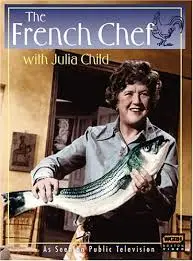
7. The French Chef
The French Chef is a classic cooking show hosted by Julia Child, focusing on teaching viewers how to prepare French-inspired dishes at home. The program features a host guiding the audience through the steps of each recipe in a relaxed, approachable way. Instead of flashy visuals or fast-paced editing, the show emphasizes clarity and instruction, making complex techniques feel simple and doable for home cooks.
The episodes are centered around cooking fundamentals and traditional recipes, with an emphasis on technique, ingredient use, and presentation. The show doesn’t rely on competition and rarely features guest appearances, building its appeal through personality and practical education, making it feel like a personal cooking lesson in every episode.
Key Highlights:
- Focuses on step-by-step demonstrations of classic recipes
- Set in a home-style kitchen studio
- Known for its approachable and educational tone
- Aims to inspire confidence in everyday cooking
Who it’s best for:
- Viewers looking to build foundational cooking skills
- Home cooks interested in traditional recipes and methods
- Those who prefer straightforward, non-competitive cooking shows
- Anyone curious about the basics of French-inspired cuisine
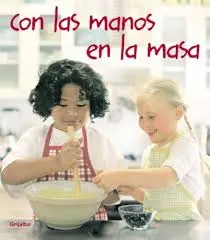
8. Con las manos en la masa
Con las manos en la masa is a Spanish cooking program that blends casual conversation with hands-on recipe demonstrations. Each episode features a guest from the world of entertainment, culture, or sports, joining the host in a studio kitchen to cook together. The focus stays on traditional Spanish cuisine, giving the audience a glimpse into regional recipes and everyday dishes.
The format combines cooking with storytelling, often highlighting the cultural background or personal connection behind the meals. Rather than using a competitive or instructional tone, the show creates a relaxed and friendly atmosphere where food serves as a bridge between the host, the guest, and the audience.
Key Highlights:
- Features recipes rooted in Spanish tradition, often presented in a relaxed, conversational format with celebrity guests.
- Presented in a relaxed, conversational format with celebrity guests
- Filmed in a studio kitchen setting
- Blends cooking with cultural commentary and personal stories
Who it’s best for:
- Viewers interested in traditional Spanish recipes
- Fans of cooking shows that highlight culture and personality
- Those who prefer relaxed, dialogue-driven programming
- People curious about Spain’s culinary heritage through a home-cooked lens

9. Good Eats
Good Eats is a cooking show that blends food instruction with storytelling, science, and humor. Rather than focusing solely on recipes, the series takes a deeper dive into how and why cooking methods work. Each episode centers on a specific ingredient, dish, or technique, using visual aids, experiments, and demonstrations to break down culinary topics in an engaging and educational way.
The show’s format mixes hands-on cooking with commentary, props, and sketches to explain kitchen science and food history in a way that feels playful yet informative. Designed to educate as much as entertain, the series encourages viewers to understand the process behind what they’re making, rather than just follow steps.
Key Highlights:
- Breaks down cooking topics using science, visuals, and hands-on examples
- Combines food education with narrative sketches and humor
- Explores the role of tools, ingredients, and history in everyday cooking
- Features thematic episodes that dive deep into specific food subjects
Who It’s Best For:
- Viewers who enjoy learning the “why” behind cooking techniques
- Fans of food content that mixes information with creativity
- Home cooks curious about culinary science and kitchen logic
- Audiences who appreciate cooking shows with a storytelling element.
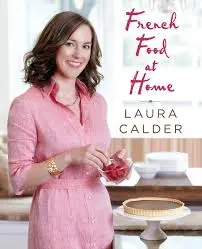
10. French Food at Home
French Food at Home is a cooking show that focuses on simple, everyday dishes inspired by French home cooking. Set primarily in a domestic kitchen, the program combines recipe demonstrations with glimpses into food traditions, markets, and ingredients. The approach emphasizes comfort and familiarity over complexity, offering viewers a relaxed introduction to regional culinary habits.
The episodes blend Canadian and French settings, adding cultural context to the food without turning the show into a travelogue. The cooking remains grounded and personal, reflecting the spirit of home-prepared meals. The tone is calm and inviting, ideal for viewers who enjoy food as part of everyday life rather than as performance.
Key Highlights:
- Focuses on approachable French-inspired home cooking
- Mixes kitchen instruction with cultural visuals and market scenes
- Shot in both Canada and France
- Emphasizes personal and regional food traditions
- Avoids high-end culinary techniques in favor of simplicity
Who it’s best for:
- Viewers who enjoy thoughtful, low-key cooking shows
- Fans of regional cuisine presented in a casual, real-life format
- Home cooks looking for cultural context behind everyday meals
- Audiences who appreciate food storytelling alongside recipes
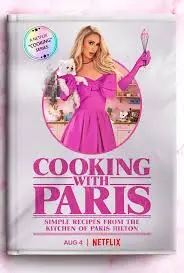
11. Cooking with Paris
Cooking with Paris is a personality-driven cooking show that blends casual food prep with pop culture moments. Set in a home kitchen, the show features a mix of themed meals and guest appearances, with each episode pairing the host with a celebrity for a light, informal cooking experience. Rather than focusing on perfect techniques, the series leans into experimentation, conversation, and stylized visuals.
The format is loosely structured, combining basic cooking steps with unscripted dialogue and playful setups. While food is a central part of each episode, the emphasis is on entertainment, style, and personality, making it feel more like a variety show with a culinary twist.
Key Highlights:
- Features themed episodes with guest appearances
- Set in a casual home kitchen environment
- Focuses on fun and experimentation rather than precise instruction
- Emphasizes visual presentation and personality
Who it’s best for:
- Viewers who enjoy pop culture and celebrity-focused content
- Fans of unscripted, casual entertainment with a cooking element
- People looking for light, short-form cooking experiences
- Audiences interested in food as part of a lifestyle or media persona
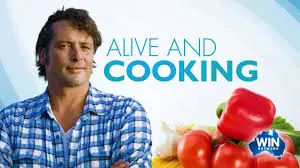
12. Alive and Cooking
Alive and Cooking is an Australian daytime cooking show that focuses on approachable recipes and everyday meal ideas. Hosted by chef James Reeson, the program features step-by-step demonstrations designed for home cooks looking to create practical and flavorful dishes. Rather than emphasizing restaurant-level complexity, the show aims to make cooking enjoyable and accessible to a wide audience.
Episodes are centered on full meal preparation, often including helpful tips about ingredients, timing, and substitutions. The format is casual and instructional, with a strong emphasis on meals that can be recreated in a regular home kitchen. The overall tone is light and friendly, reflecting a relaxed approach to cooking.
Key Highlights:
- Hosted by James Reeson, with a focus on simple, everyday recipes
- Designed for home cooks seeking approachable meal ideas
- Aired daily across various Australian regional and metropolitan networks
- Recipes are demonstrated step by step in an easy-to-follow format
- Emphasizes practical cooking with helpful kitchen tips
Who it’s best for:
- Viewers looking for down-to-earth, family-friendly recipes
- Home cooks who prefer clear, step-by-step guidance
- Fans of daytime cooking shows with a relaxed pace
- Anyone wanting inspiration for regular home meals without fuss

13. Dinner and a Movie
Dinner and a Movie is a unique blend of film entertainment and cooking, originally airing in the United States. The show pairs feature films with themed recipes, with hosts preparing dishes that connect often humorously to the movie being shown. Rather than being purely instructional or culinary, the program balances cooking segments with pop culture, creating a casual and engaging viewer experience.
Each episode typically includes a lighthearted recipe inspired by the movie’s storyline, title, or theme. These recipes are often named with puns, and the cooking is interspersed throughout the film presentation. The show is built around humor, personality, and creativity, appealing to viewers who enjoy entertainment with a culinary twist rather than formal instruction.
Key Highlights:
- Combines movie screenings with themed cooking segments
- Recipes are often humorous or pun-based, tied to the film’s plot
- Hosted by a mix of chefs and comedians over the years
- Features occasional guest appearances linked to the movie being shown
Who it’s best for:
- Viewers who enjoy relaxed, personality-driven cooking shows
- Fans of pop culture who like a creative take on movie nights
- People looking for light entertainment with a culinary element
- Anyone interested in fun, casual cooking paired with film nostalgia

14. Good Chef Bad Chef
Good Chef Bad Chef is an Australian cooking show that offers a split approach to food preparation by featuring both health-focused and indulgent recipes in each episode. The concept is simple but effective: one host takes on the role of the “Good Chef,” presenting nutritious, balanced meals, while the “Bad Chef” creates richer, comfort-style dishes. This dynamic format highlights the contrast between healthy eating and classic indulgence, giving viewers a balanced perspective on cooking.
Co-hosted by regular chefs and nutrition experts, with occasional guest appearances, the show is designed to show balance and flexibility in everyday cooking. The tone remains friendly and conversational, with each host explaining their culinary choices and preparation methods. Viewers are encouraged to consider a variety of cooking styles, from nutrient-packed dishes to hearty favorites, without a preachy or restrictive message.
Key Highlights:
- Features both healthy and indulgent recipes in each episode
- Designed to show balance and flexibility in everyday cooking
- Includes a mix of traditional and modern recipes
- Continues to evolve with new host combinations and seasonal themes
Who it’s best for:
- Viewers looking to explore both healthy and hearty meal options
- Home cooks interested in food variety without strict dietary rules
- Fans of shows that blend education with casual entertainment
- People seeking recipe ideas for different eating styles in one place
Conclusion
Cooking shows continue to offer a wide variety of formats, from high-pressure competitions to slower-paced explorations of culinary traditions. They reflect different approaches to food, some focus on technical skill, others on storytelling, and many blend both.
What ties them together is a shared interest in how food is prepared, presented, and appreciated. Whether you’re watching for ideas, technique, or just pure entertainment, there’s a wide range of shows that document the diverse world of cooking without needing a one-size-fits-all formula.

Leave a Reply